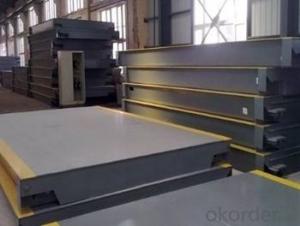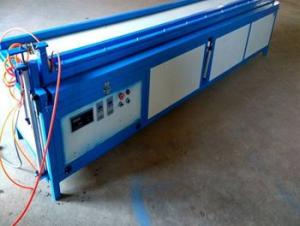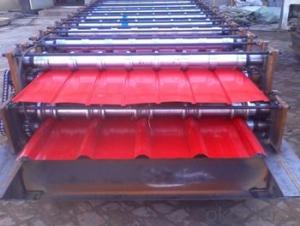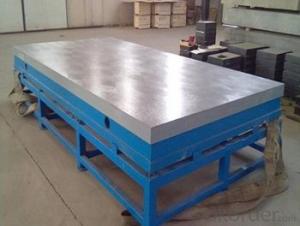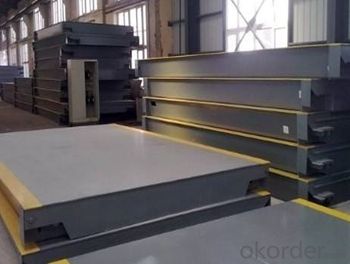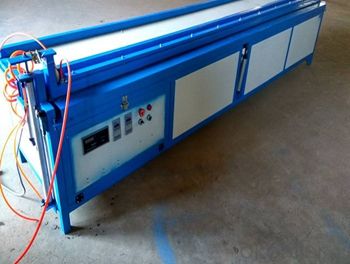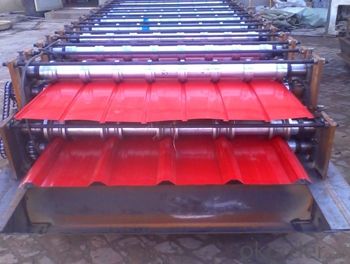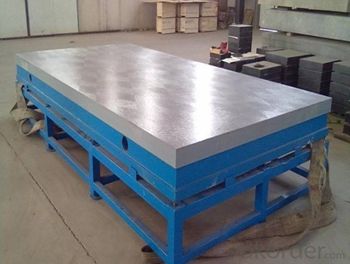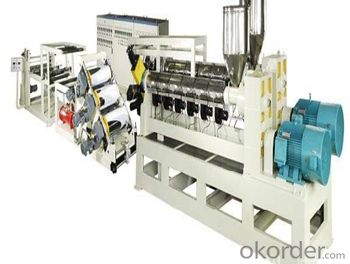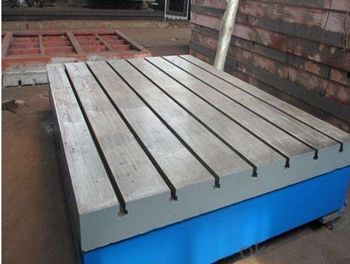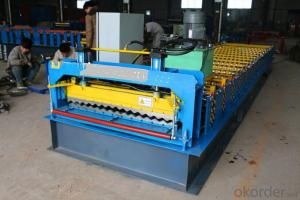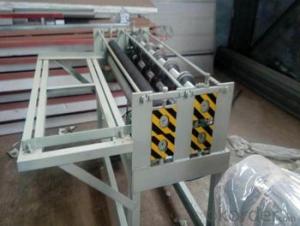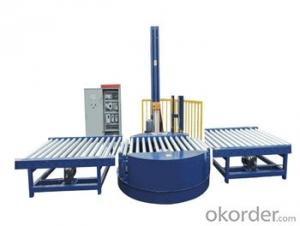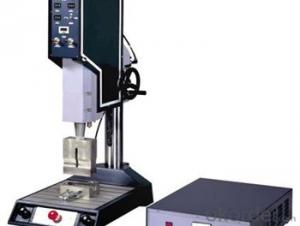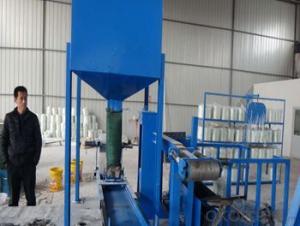FRP Pultrusion Profiles - Vivid Color FRP Pultruded Grating with Toxic Warning
- Loading Port:
- Tianjin
- Payment Terms:
- TT OR LC
- Min Order Qty:
- 1 m.t.
- Supply Capability:
- 100000 m.t./month
OKorder Service Pledge
OKorder Financial Service
You Might Also Like
FRP PULTRUDED GRATING AND PULTRUSION PROCESS
PRODUCT DESCRIPTION
Pultruded grating is made by a particular assembly process, which using “I” shape as its main load-bearing and special rod to go through the bearing bar. Pultruded grating include the standard grating and the custom grating, the custom grating can be designed to meet customer’s requirement or special using condition by changing the shape, size and space of the bearing bars, the surface can be covered with lozenge panel, grit panel, or added the anti-slippery sand directly.
FRP pultruded grating has the most characteristics of molded grating, but it has its distinct advantages, it has very high fiberglass content in the loading direction, so it has very high load capability, it has more superiority when used at wide span, so that the basic support will be decreased and the project cost will be reduced accordingly.
SPECIFICATION
The standard space between two crossbars is 6 inch or 12 inch.
Thickness (mm) | Bar width (mm) | Open space (mm) | Open rate (%) | Approx weight (kg/m |
25.4 | 15.2 | 22.8 | 60 | 13.2 |
25.4 | 15.2 | 15.2 | 50 | 15.9 |
25.4 | 15.2 | 10.1 | 40 | 18.5 |
25.4 | 40 | 10.8 | 21 | 14.5 |
38.1 | 15.2 | 22.8 | 60 | 15.8 |
38.1 | 15.2 | 15.2 | 50 | 19.1 |
38.1 | 15.2 | 10.1 | 40 | 22.4 |
50.8 | 25.4 | 25.4 | 50 | 16.6 |
50.8 | 25.4 | 12.7 | 33 | 21.1 |
CHOICE FOR PULTRUDED GRATING
Resin: GP resin, ISO resin, VE resin, Phenol resin
Color choice: Yellow, gray, green, custom color
Surface choice: Groove surface, grit surface, lozenge cover surface
FEATURES
a. Anti-corrosion and anti-rust
b. Light weight and high strength
c. Anti-flammable
d. Anti- fatigue
e. Safe and anti-slippery
f. Anti-ageing
g. Easy of maintenance
h. Excellent electromagnetism property
i. Good economic benefit
FIELDS SERVED
Sewage treatment,
water supply and drainage,
chemical industry,
oil industry,
power engineering,
pulp and paper,
construction engineering,
spinning, marine engineering.
COMPANT DESCRIPTION
CNBM,China National Building Materials Group is a state-owned enterprise in charge of administrative affairs in china building materials industry. Established in 1984, CNBM is a large group corporation of building materials with total assets of 25 billion RMB and a total staff of 30,000.CNBM now owns 200 subordinating firms of solely owned and joint-venture companies.
CNBM International Corporation is one subsidiary of CNBM, we focus on offering good-quality products,professional service and complete solution to our customers. Strong delivery capacity, advanced technology& management, strong financing capability and excellent after-sale service are our advantages in sharing international market.
FAQ
1.Q:Are you factory or trading company ?
A:We are Factory produce FRP machines and FRP products.
2.Q:If can customized by customers requirements?
A:yes,we can produce the machine with customized size.
3.Q:How about the payment?
A:We accept any kind of payment.
4.Q:What is the guarantee?
A:Gurantee is one year.
5.Q:If you can training?
A:yes ,we can training in our factory also can send engineers to your factory training.
PICTURES
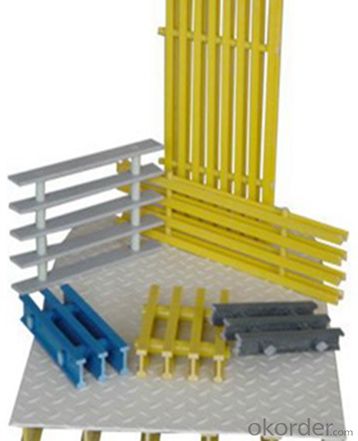
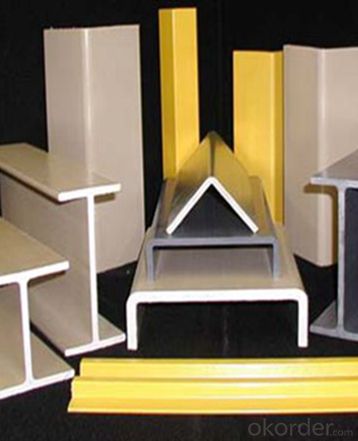
- Q: Can FRP pultrusion profiles be used in the construction of recreational vehicles (RVs)?
- Yes, FRP pultrusion profiles can be used in the construction of recreational vehicles (RVs). These profiles offer several advantages such as high strength-to-weight ratio, resistance to corrosion and rot, and excellent thermal insulation properties. Additionally, FRP pultrusion profiles can be easily molded into complex shapes, making them suitable for various applications within the construction of RVs, including structural components, flooring, walls, and roofs.
- Q: Are FRP pultrusion profiles resistant to high winds or hurricanes?
- Yes, FRP (Fiber Reinforced Polymer) pultrusion profiles are highly resistant to high winds and hurricanes. FRP is a composite material that combines the strength of fiberglass with the durability of polymers. This results in a lightweight yet incredibly strong material that can withstand extreme weather conditions. FRP pultrusion profiles have been extensively tested and have proven to have excellent wind resistance properties. They have a high stiffness-to-weight ratio, allowing them to withstand the forces exerted by high winds without bending or breaking. Additionally, the inherent flexibility of FRP allows it to absorb and distribute the forces exerted by wind, reducing the risk of damage. In the case of hurricanes, FRP pultrusion profiles have demonstrated their ability to withstand the strong winds and flying debris associated with these severe weather events. They have been used in various applications such as building facades, bridges, and utility poles in hurricane-prone areas, with great success. Furthermore, FRP pultrusion profiles are corrosion-resistant, which is another advantage when it comes to withstanding high winds and hurricanes. Unlike traditional materials like steel or wood, FRP profiles do not rust or rot when exposed to moisture, making them even more suitable for these challenging weather conditions. Overall, due to their high strength, durability, flexibility, and corrosion resistance, FRP pultrusion profiles are an excellent choice for applications where resistance to high winds or hurricanes is required.
- Q: Can FRP pultrusion profiles be customized according to specific requirements?
- Yes, FRP pultrusion profiles can be customized according to specific requirements. Pultrusion is a manufacturing process that allows for the creation of complex shapes and sizes, making it possible to tailor the FRP profiles to meet specific design and performance criteria. This customization can include modifications in dimensions, reinforcement types, resin systems, color, surface finish, and various other parameters to ensure they meet the desired specifications and needs of the application.
- Q: Can FRP pultrusion profiles be used in electrical or telecommunications applications?
- FRP pultrusion profiles have a wide range of applications in the electrical and telecommunications industries. These profiles are highly regarded for their exceptional electrical insulating properties, impressive strength-to-weight ratio, and resistance to corrosion. As a result, they are well-suited for various electrical and telecommunications purposes. When it comes to electrical applications, FRP pultrusion profiles can function as electrical insulators, cable trays, busbar supports, and electrical enclosures. They serve to insulate and safeguard against electrical shocks, making them a popular choice for replacing traditional materials like metal or wood. Moreover, their non-conductive properties, along with their lightweight and easy installation, make them highly suitable for electrical applications. In the realm of telecommunications, FRP pultrusion profiles are utilized for cable management systems, antenna supports, and equipment enclosures. Similar to their electrical applications, the non-conductive nature of these profiles ensures the safety and reliability of the telecommunications infrastructure. Additionally, these profiles can be tailored to meet specific design requirements, such as incorporating cable routing channels or equipment mounting brackets. Furthermore, FRP pultrusion profiles exhibit exceptional resistance to harsh environmental conditions, such as moisture, UV radiation, and chemicals. This makes them an excellent choice for outdoor electrical or telecommunications installations, where exposure to these elements is commonplace. All in all, FRP pultrusion profiles have proven themselves to be a dependable and cost-effective option for electrical and telecommunications applications. They provide insulation, strength, durability, and resistance to environmental factors, making them highly sought-after in these industries.
- Q: Are FRP pultrusion profiles resistant to caustic solutions?
- Yes, FRP (Fiber Reinforced Polymer) pultrusion profiles are generally resistant to caustic solutions. The combination of the reinforcing fibers and the polymer matrix used in FRP pultrusion provide excellent chemical resistance. Caustic solutions, such as strong alkaline substances, can often corrode or degrade traditional materials like steel or wood. However, FRP pultrusion profiles are highly resistant to chemical attack, making them suitable for applications where exposure to caustic solutions is common. This resistance makes FRP pultrusion profiles an ideal choice for industries such as chemical processing, wastewater treatment, and marine environments where corrosive substances are present. Nonetheless, it is important to consult the manufacturer's specifications and guidelines to ensure that specific caustic solutions are compatible with the particular FRP pultrusion profile being used.
- Q: What is the cost of FRP pultrusion profiles compared to other materials?
- The cost of FRP (Fiber Reinforced Polymer) pultrusion profiles can vary depending on several factors such as the specific application, size, complexity of design, and quantity required. However, in general, FRP pultrusion profiles tend to be more cost-effective compared to many traditional materials. When compared to materials like steel, aluminum, or wood, FRP pultrusion profiles often provide a lower overall cost, especially when considering long-term savings. While the initial material cost of FRP pultrusion profiles may be slightly higher than some traditional materials, the benefits and advantages it offers can outweigh the price difference. FRP pultrusion profiles are known for their lightweight nature, high strength-to-weight ratio, corrosion resistance, and durability. These characteristics contribute to reducing transportation costs, installation expenses, and maintenance requirements. Additionally, the long lifespan of FRP profiles ensures minimal replacement or repair costs over time. Moreover, the manufacturing process of FRP pultrusion profiles allows for precise customization, eliminating the need for additional machining or fabrication, which can further reduce costs. The ability to incorporate design features such as integral stiffeners, brackets, and fastening points during the pultrusion process eliminates the need for additional assembly steps, ultimately saving time and money. It is important to note that while FRP pultrusion profiles may have a higher upfront cost compared to some materials, the overall cost-effectiveness and long-term benefits make them a favorable choice in many applications. Each project's specific requirements and considerations should be taken into account when evaluating the cost of FRP pultrusion profiles compared to other materials.
- Q: How do FRP pultrusion profiles perform in high-humidity environments?
- FRP pultrusion profiles perform exceptionally well in high-humidity environments. The inherent properties of fiberglass reinforced plastic, such as corrosion resistance and moisture resistance, make these profiles highly durable and resistant to degradation caused by exposure to moisture and humidity. Additionally, FRP pultrusion profiles do not rot, warp, or rust, making them an ideal choice for applications in high-humidity environments.
- Q: Are FRP pultrusion profiles resistant to electromagnetic interference?
- FRP pultrusion profiles are known for their resistance to electromagnetic interference (EMI). By using fiberglass reinforced plastic (FRP) in pultrusion profiles, they offer exceptional electrical insulation properties that effectively minimize the impact of electromagnetic interference. Unlike conductive metals, FRP materials possess high dielectric strength and low electrical conductivity. As a result, FRP pultrusion profiles are less vulnerable to EMI and can serve as barriers against electromagnetic waves. Moreover, if necessary, additional layers or coatings can be applied to enhance the EMI shielding effectiveness of FRP materials. In conclusion, for applications where resistance to electromagnetic interference is crucial, FRP pultrusion profiles are a dependable choice.
- Q: How do FRP pultrusion profiles perform in chemical processing plants?
- FRP pultrusion profiles perform exceptionally well in chemical processing plants. They are highly resistant to corrosion, chemicals, and extreme temperatures, making them an ideal choice for various applications. Their superior strength-to-weight ratio allows for easy installation and reduces maintenance costs. Additionally, FRP profiles offer excellent electrical insulation properties, making them safe and reliable in hazardous environments. Overall, FRP pultrusion profiles are a reliable and durable solution for chemical processing plants.
- Q: Do FRP pultrusion profiles require any special tools for installation?
- Yes, FRP (Fiber Reinforced Polymer) pultrusion profiles do require some special tools for installation. Pultrusion profiles are manufactured using a continuous process that involves pulling fibers through a resin bath and then into a heated die, resulting in a strong, lightweight, and corrosion-resistant material. To properly install FRP pultrusion profiles, some specific tools are commonly used. These tools include: 1. Cutting Tools: FRP profiles may need to be cut to specific lengths during installation. Special cutting tools, such as high-speed saws or abrasive wheels, are often used to ensure clean and precise cuts. 2. Drilling Tools: FRP profiles may require holes to be drilled for fasteners or other fittings. Special drill bits designed for working with composite materials are typically used to avoid damaging the profile while creating the necessary holes. 3. Fastening Tools: Depending on the application, FRP profiles may need to be fastened to other surfaces or structures. Special fasteners like stainless steel screws, bolts, or adhesives are commonly used to secure the profiles in place. 4. Joining Tools: In certain cases, FRP profiles may need to be joined together to create longer lengths or more complex shapes. Special joining techniques like bonding, riveting, or using mechanical connectors are employed to ensure a strong and secure connection. It is important to note that the specific tools required for installation may vary based on the project's complexity, size, and the manufacturer's recommendations. Therefore, it is always advisable to consult the manufacturer's installation guidelines or seek professional assistance to ensure proper installation and to maximize the performance of FRP pultrusion profiles.
Send your message to us
FRP Pultrusion Profiles - Vivid Color FRP Pultruded Grating with Toxic Warning
- Loading Port:
- Tianjin
- Payment Terms:
- TT OR LC
- Min Order Qty:
- 1 m.t.
- Supply Capability:
- 100000 m.t./month
OKorder Service Pledge
OKorder Financial Service
Similar products
Hot products
Hot Searches
Related keywords
